YouTube Channel Audit Tool
Enter any YouTube Channel name or URL, and we’ll run a detailed audit on its completeness and performance.
Try it Now!
Channel Overview
Subscribers:
Total Views:
Video Count:
Did you know that YouTube is the second-largest social media platform globally, right after Facebook? Instead of just uploading your videos and leaving them, you should leverage its large, active user base and its importance in search rankings, not only on YouTube but also in Google search.
What is a YouTube audit?
A YouTube audit provides a detailed, unbased review of your YouTube channel and videos. It’s ideal for those looking to make the most of YouTube but unsure where to begin.
By conducting a YouTube audit, you’ll identify key areas for improvement and focus on addressing any major issues while also establishing a performance baseline.
Establishing a baseline means setting a starting point. Once you have a baseline, you’ll better understand your average views per video, engagement rates, view durations, and other important metrics.
Why audit your YouTube Channel?
Conducting a YouTube audit before creating a strategy for your YouTube channel is wise. This step is crucial, especially when working with clients or stakeholders, as it provides the data needed to inform your strategy.
When your strategy is based on data, you have a solid foundation that supports your decisions. This approach is more reliable than relying solely on intuition or opinion, which can lead to disagreements with stakeholders.
Many agencies and brand managers audit their YouTube channels annually or semi-annually. This process helps them track Key Performance Indicators (KPIs) and show clients how successful their strategies have been.
YouTube audits also help identify areas for improvement. When multiple people manage your YouTube Studio account, it can be challenging to track responsibilities. An audit can clarify these roles and highlight areas that need immediate attention, such as missing tags, poorly optimized video descriptions, or inconsistent use of hashtags.
What does a YouTube Audit contain?
A YouTube Audit has two main parts:
YouTube Channel Audit:
This means carefully reviewing all the information about your channel in YouTube Studio and examining each part.
Channel Layout and Featured Sections: This involves reviewing how your channel is visually organized, including spotlight videos and featured sections. Ensuring that your layout showcases your best content and is regularly updated for optimal performance is important.
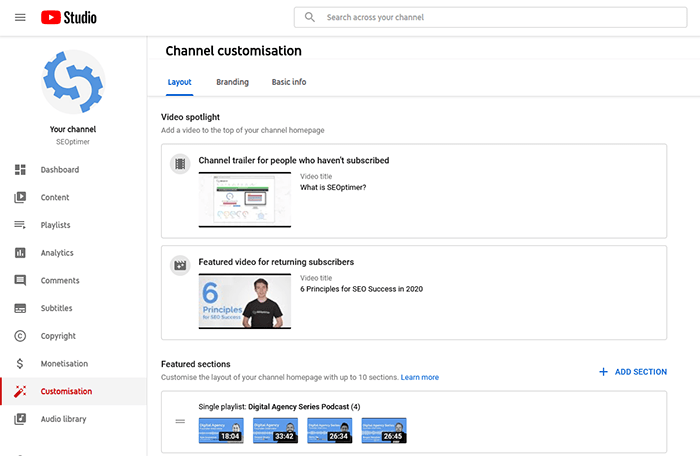
Branding: Customizing your profile picture, banner image, and watermark helps maintain a consistent brand look across your channel and videos.
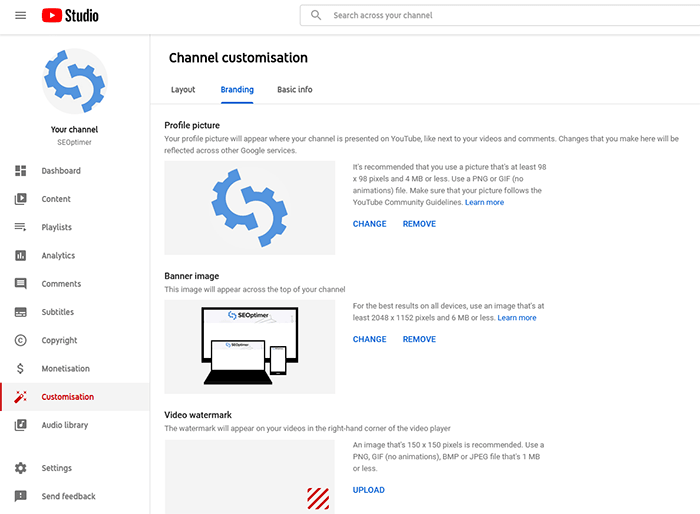
Basic Info: In this section, you can customize your channel name, description, banner links, and contact email address.
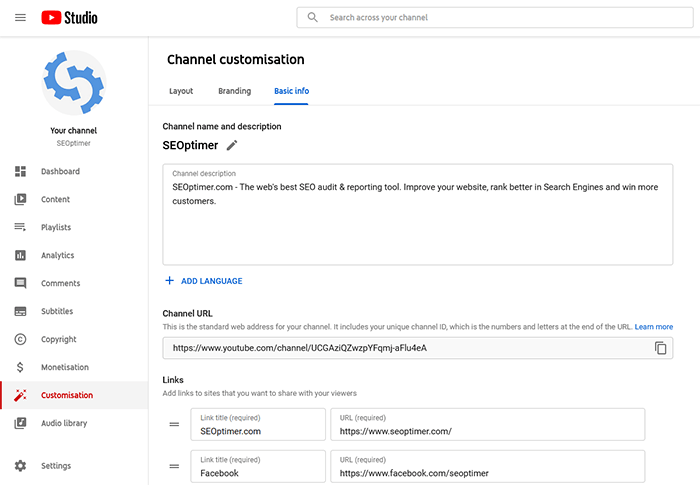
On YouTube, you can link to all your social media channels as well as your website, blog, or other pages. These links are prominently displayed at the top of your YouTube channel, so use them to drive traffic to your other online destinations.
YouTube Video Audit:
Next, it’s important to audit your videos themselves. Luckily, YouTube’s Analytics tab provides valuable insights both across all your videos and for each video individually.
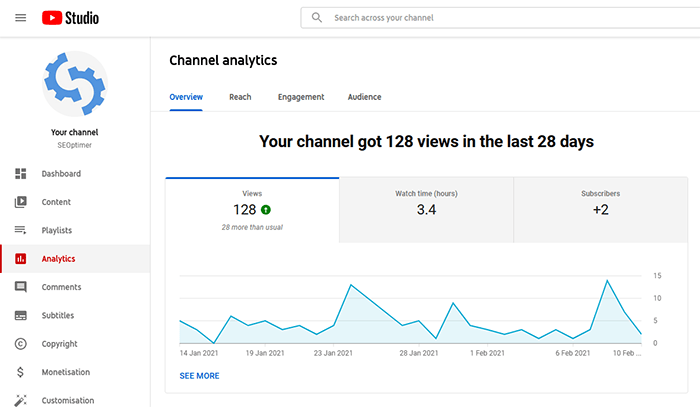
It’s essential to focus on the following key metrics:
Views: This is a crucial YouTube metric, indicating how often your video has been watched. It’s important to note that YouTube’s definition of a ‘view’ differs from that of other platforms. While Facebook and Instagram count a view after 3 seconds of viewing, YouTube’s view count is more dynamic and considers factors like video length, user behavior, and device used.
Engagement: This group of metrics includes various aspects like total watch time, average view duration per video, the percentage of viewers still watching at specific points (e.g., 30 seconds), and interactions such as likes, comments, and shares. These metrics show how engaging your content is and whether viewers are staying to watch or leaving quickly.
Subscribers: This metric is unique to YouTube but is similar to having followers on social media platforms like Instagram or Twitter. Having many subscribers is essential if your video views primarily come from YouTube. Subscribers provide built-in viewership when you release a new video. Since YouTube focuses on feeds now, it’s beneficial to encourage viewers to subscribe so they’re more likely to see your future videos in their feeds.
Traffic Sources: This metric shows where your viewers discover and watch your videos. Most views typically come from YouTube, the website, or the app, often after a search. However, viewers can find your videos embedded on other websites or watch them on devices like Smart TVs or PVRs. Additionally, your videos can be recommended in various sections of YouTube, such as the Home or Explore tabs.
What does the YouTube Audit Tool look for?
The YouTube Audit Tool performs the following checks:
Channel checks:
- Name
- Description
- Branding
- Subscribers
Video checks:
- Video Views
- Total Watch Time
- Average Watch Time Per Video
- Average Percentage of People Watching at 0:30
- Video Likes
- Video Dislikes
- Video Comments
- Video Shares
- Clicks on Description Links
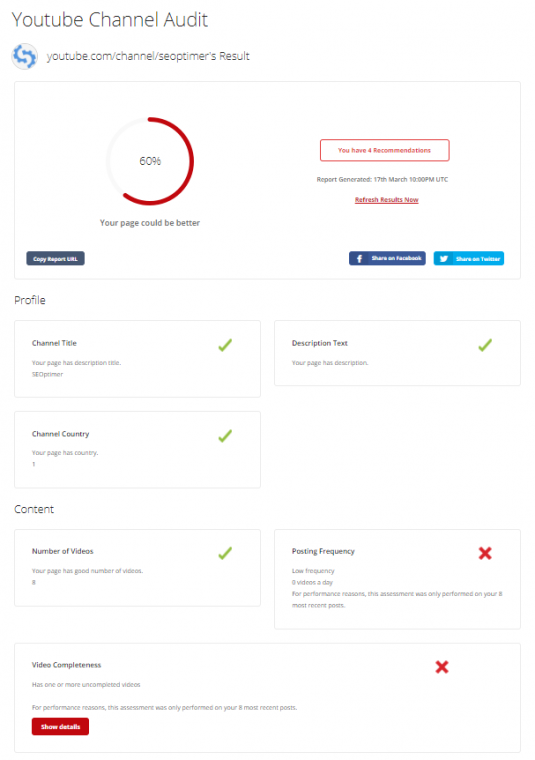
Best Practices for Your YouTube Channel
We recommend the following YouTube Channel best practices:
Complete your channel profile
This is the first step. Once you’ve completed this, you can focus on optimizing your videos. Ensure you fill out all the channel details and use relevant keywords in your description.
Focus on the first few seconds
Marketers often wonder how long their videos should be—1 minute, 3 minutes, 10 minutes? However, there’s no clear pattern or trend in video durations when you look at top-performing videos. What matters most is grabbing the viewer’s interest and attention in the first few seconds. If you can hook the viewer early on, the length of your video becomes less critical. Avoid lengthy introductions or establishing shots, and focus on generating as much interest as possible right from the start.
Master the art of video titles, descriptions and thumbnails
In video SEO, three main elements are crucial: video titles, descriptions, and thumbnail images. While other factors are at play, these three are vital in determining your video’s ranking and click-through rate.
Your video title should effectively summarize the value of your video in a single line. This can be challenging, but it needs to be enticing to attract viewers. Conversely, thumbnails are used alongside titles to help users choose your video from search results. Thumbnails featuring a person or highlighting a critical visual are more effective.
Be single-minded
YouTube videos that focus on one specific topic or theme rank higher in search results. This is often due to a match between the user’s search term and keywords in the video’s title, description, tags, and hashtags.
Post at least 1 new video per week
Consistency is crucial on YouTube. By regularly releasing new videos (at least once per week), you can encourage viewers to develop a habit of watching your content. This can help boost your views over time. Users who watch your previous videos are likelier to see your future videos in their feeds. Encouraging viewers to interact with your videos and subscribe to your channel can increase your visibility.
Stay across trends
Please pay attention to viewer trends unrelated to your industry or topic, as they can inspire your content. YouTube regularly writes about the latest trends on its blog, “Culture & Trends,” and you can also check out what’s currently trending on YouTube’s Trending tab.